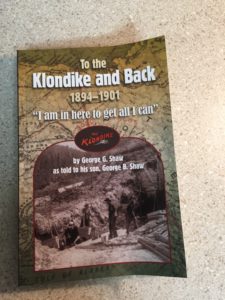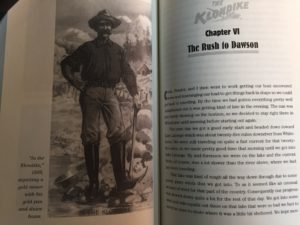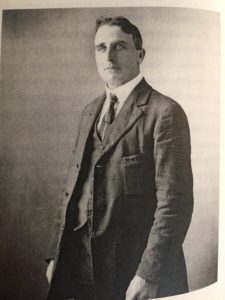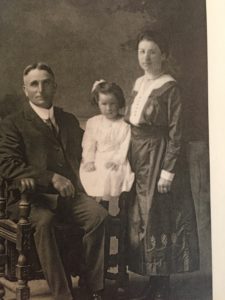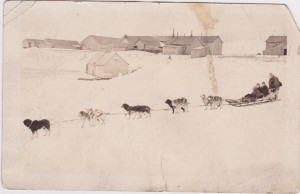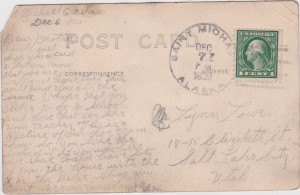
Arthur was the eighth child born to the Richards family in 1859 in Ohio. His older sister, Clara ran the post office in Dyea, a story which I wrote about earlier here. Apparently her two brothers were also here, Arthur and Daniel.
Arthur was appointed by the U.S. Commissioner to be U.S. Marshal for the Dyea District. In a letter he wrote:
“I have been over the trail to the headwaters of the Yukon several times, to arrest men for getting into rows – generally for using guns…The wonder to me is not so much that men die but that any can survive the hardships. So much packing in mud and wading waist deep in ice-cold water, right from the glaciers above. A good many give up their outfits here for what they can get, and return home. ”
One descendent said that family lore has it that Arthur was responsible for laying the first telephone line from Dyea to the top of the Chilcoot Pass. That would have been during the 1897-98 time as there were several tramways built at that time also. They had better communication then than now, even cell phones don’t always work on the trail today.
He also said ” It is a pleasant trip up here from San Francisco except that accommodations are limited, and while the excitement keeps up the ships will be overcrowded. The steamer I came on, the Mexico, sank on her return trip in 200 fathoms of water and everything lost but the passengers.” this would have been in August 1897 because I found the following article:
The Alaska Searchlight of August 14, 1897 reported on the wreck of the Steamer Mexico: “near the end of Dixon Entrance. The steamer was southbound when it ran upon some hidden rocks at 4 o’clock on the morning of the 6 th . The rocks stove a big hole in the bottom of the boat, but luckily there was not freight on board and the bulkhead compartments of the boat kept it afloat for about two hours, when it finally sank in 100 fathoms of water. The shock caused confusion on board and passengers were thrown from their berths. In a few minutes, however the officers quieted down the passengers while the crew quickly launched the boats and every passenger was transferred from the sinking ship. The hand baggage belonging to passengers was taken from the ship and it is reported that the mail was taken off, although it is not definitely known. There were one hundred persons on board….”
1900 census; Daily Alaskan 3/13/1900 (in 2001 Skagway News); Skagway Museum record; CA death rec; Photo and letter courtesy of Diane Richards Design. Information and updates courtesy of Glenn McKinney – many thanks!
